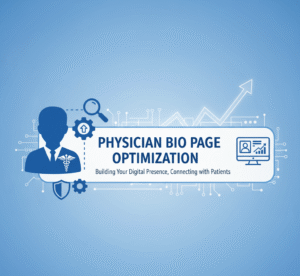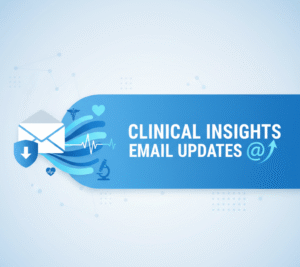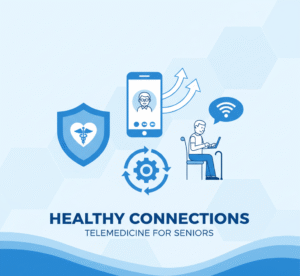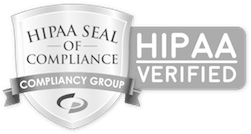“Learn how to start building a patient email list safely while remaining HIPAA compliant. Our guide offers actionable steps for collecting emails and sending marketing communications securely.”
In today’s digital world, email remains a powerful tool for connection. For healthcare providers, it offers a direct line to patients, allowing you to share valuable health information, announce new services, and build stronger, more trusting relationships. However, for any medical practice, the mention of email marketing often brings a wave of anxiety. The reason is a single, five-letter acronym: HIPAA.
The Health Insurance Portability and Accountability Act sets the standard for protecting sensitive patient data. Its rules are strict, and the penalties for non-compliance are severe. This reality leads many practices to avoid email marketing altogether, missing out on a tremendous opportunity for patient engagement and practice growth. But it doesn’t have to be this way.
You can build a thriving patient email list and run effective email campaigns while maintaining full HIPAA compliance. It requires a thoughtful, deliberate, and informed approach. This guide will provide the clear, actionable steps you need. We will break down the complexities of HIPAA as they relate to email, show you secure methods for collecting patient emails, and explore the best practices for managing your communications responsibly.
Forget the fear and uncertainty. Let’s explore how you can correctly build your patient email list—a way that respects patient privacy, builds trust, and ultimately strengthens your practice.
First, Why Is a Patient Email List So Valuable?
Before we get into the technical and legal requirements, it’s essential to understand the significant benefits you stand to gain. Building a patient email list isn’t just about sending out newsletters; it’s a core component of modern patient care and a smart strategy for medical marketing.
1. Enhances Patient Education and Engagement
Your relationship with a patient shouldn’t be confined to the 15 minutes they spend in the exam room. Email provides a perfect channel to continue their education and engage them in their health journey.
- Health & Wellness Newsletters: Send out monthly or quarterly newsletters with seasonal health tips (e.g., “5 Ways to Beat Seasonal Allergies,” “Protecting Your Skin This Summer”), healthy recipes, or myth-busting articles related to your specialty.
- New Service Announcements: Are you introducing telehealth services, a new diagnostic tool, or a new specialist to your team? Email is the most direct way to inform your patient base.
- Preventative Care Reminders: Go beyond simple appointment reminders. Send emails encouraging patients to schedule annual check-ups, flu shots, or essential screenings. This proactive communication demonstrates that you care about their long-term well-being.
2. Improves Health Outcomes and Adherence
Consistent communication can directly impact patient behavior and health outcomes. A well-managed email list helps bridge the gap between visits.
- Appointment Follow-Ups: Send post-visit summaries (non-specific, of course, like “Thanks for visiting! Here are general resources on managing hypertension.”) or links to educational materials on your blog related to their visit.
- Medication Adherence: While you cannot email specific prescription information, you can send general reminders about the importance of taking medication as prescribed or links to tools that help manage refills.
- Reduces No-Shows: Automated email reminders for upcoming appointments effectively reduce costly no-shows and ensure patients receive the timely care they need.
3. Streamlines Administrative Communication
Your front desk staff is busy. An email list can help reduce their workload by proactively answering common questions and streamlining processes.
- Policy Updates: Instead of relying on phone calls or in-office signs, send a single email blast to inform patients about changes to your office hours, insurance policies, or billing procedures.
- Pre-Visit Information: Send links to new patient forms that can be completed online before the appointment, saving time and hassle for the patient and your staff.
- Frequently Asked Questions: Create a newsletter series or automated email that addresses the most common questions your office receives, freeing up your phone lines.
4. Drives Practice Growth and Manages Reputation
An engaged email list is a powerful asset for growing your practice. These are your most loyal patients, and their advocacy is invaluable.
- Requesting Reviews: You can send a polite email asking satisfied patients to leave a review on Google, Healthgrades, or other relevant platforms. Positive reviews are critical for attracting new patients.
- Referral Programs: Inform patients about your referral program (if you have one) and encourage them to recommend your practice to friends and family.
- Building Community: Sharing staff spotlights, community involvement, or practice milestones helps humanize your clinic and build a stronger sense of community and trust.
The HIPAA Hurdle: Understanding the Rules of the Road
Now we arrive at the most critical part of our discussion: HIPAA. To build your patient email list correctly, you must understand the key principles that govern patient data privacy. This doesn’t require a law degree, but it does require attention to detail.
What is Protected Health Information (PHI)?
HIPAA’s rules revolve around protecting PHI. PHI includes any individually identifiable health information. This is more than just a patient’s diagnosis or medical history. It contains 18 specific identifiers, but for our purposes, think of it as any information linking a person to their patient status or health data.
This includes obvious things like:
- Name
- Address
- Date of Birth
- Social Security Number
- Medical Record Number
It also includes less obvious things like:
- Email address
- Phone number
- Photographs
- The very fact that an individual is a patient at your specific practice (e.g., a dermatology clinic).
When an email address is combined with a name and is stored in a list of “patients,” it becomes PHI. Therefore, your patient email list must be protected according to HIPAA standards.
Authorization vs. Consent: The Most Important Distinction
Many practices make mistakes here. There’s a vast difference between consent and authorization in the world of HIPAA.
- Consent: This is a general agreement a patient gives for your practice to use their PHI for Treatment, Payment, and Healthcare Operations (TPO). Things like sending appointment reminders, billing insurance, or coordinating care with another doctor fall under TPO. You generally don’t need separate permission for these essential activities.
- Authorization: This is a patient’s explicit, written permission for your practice to use their PHI for purposes outside of TPO. Marketing falls squarely into this category.
Sending a patient a newsletter about seasonal allergies, an announcement about a new cosmetic service, or even a holiday greeting is considered marketing. You cannot simply take the email address a patient provided on their intake form and add it to your Mailchimp list. Doing so violates HIPAA because you do not have their explicit authorization for marketing communications.
The Business Associate Agreement (BAA)
HIPAA doesn’t just apply to you; it applies to any third-party vendor or partner that handles PHI on your behalf. These entities are called “Business Associates.” This includes your email marketing service provider (ESP), website hosting company (if it stores form submissions), or a digital marketing agency.
Before you allow any vendor to handle PHI, you must have a signed Business Associate Agreement (BAA) with them. A BAA is a legal contract that requires the vendor to uphold the same HIPAA security standards that you do. If your email provider will not sign a BAA, you cannot use it to send emails that contain or are associated with PHI.
The Blueprint: 4 Compliant Strategies for Building Your Patient Email List
With a clear understanding of the rules, we can build a practical, compliant strategy for collecting patient emails. The key principle across all methods is clarity and explicit opt-in.
Strategy 1: The New Patient Intake Form (The Gold Standard)
This is your best and most reliable opportunity to gain authorization. However, it must be done correctly. Do not bury the email opt-in within a dense paragraph of other consents.
How to do it right:
Create a separate, clearly delineated section for communications and marketing on your digital or paper intake form.
Use clear, unambiguous language. For example:
Stay Connected With Our Practice!
We’d love to keep in touch with you. We can send you occasional emails by providing your email address and opting in below. These may include:
- Our monthly health and wellness newsletter
- Announcements about new services and providers
- Preventative care information and health tips
- Updates about our practice
Your privacy is our top priority. We will never sell your information, and you can unsubscribe at any time using the link at the bottom of every email. This is separate from communications directly related to your treatment or appointments.
[ ] I would like to receive email communications from [Your Practice Name].
Email Address: ___________________________________
Why this works:
- It’s Explicit: The patient is actively checking a box to opt-in. The box should never be pre-checked.
- It’s Informed: You’ve clearly stated what emails they will receive.
- It’s Separate: It is physically and legally distinct from their consent for treatment.
- It Creates a Record: This signed form serves as your proof of HIPAA-compliant authorization.
Strategy 2: In-Office Sign-Ups (Kiosks and Forms)
You can also capture email addresses from existing patients when they visit your office. Again, privacy and clarity are paramount.
Avoid this common mistake: Do not leave a clipboard at the front desk with a sign-up sheet where patients can write their names and email addresses. This allows every patient to see the PHI (name and email) of others, which is a HIPAA violation.
How to do it right:
- Use a Tablet or Kiosk: Set up a dedicated tablet with a simple sign-up form. The form should use clear language, similar to the abovementioned intake form. Once patients submit their information, the form should reset so the next person cannot see their data.
- Use Individual Slips: At the checkout desk, have small, individual paper slips that patients can fill out and drop into a secure box. The slip should have opt-in language and a checkbox.
- Train Your Staff: Your front desk staff can be your best advocates. Train them to ask patients at checkout: “Would you like to join our monthly health newsletter for tips and practice updates? I just need your email address and permission.” They can then enter the information directly into the compliant system.
Strategy 3: Your Website (Your Digital Front Door)
Your website is a fantastic tool for healthcare email list building, allowing you to connect with current and prospective patients.
How to do it right:
- Place Opt-In Forms Strategically: Add a newsletter sign-up form to your website’s footer, blog sidebar, and “Contact Us” page.
- Offer a Valuable “Lead Magnet”: A lead magnet is a free resource you offer in exchange for an email address. This is highly effective for attracting prospective patients. Your lead magnet should be relevant to your specialty.
- Dermatology Clinic: “Download Our Free Guide: 7 Daily Habits for Healthier Skin.”
- Orthopedic Practice: “Get Our Top 5 Stretches for Preventing Lower Back Pain.”
- Pediatric Office: “Sign Up for Our Checklist: Is Your Home Ready for a Newborn?”
- Use a Compliant Form Builder: Ensure your website’s forms are secure and the data is transmitted and stored compliantly, especially if you use a third-party form tool. Your website must have an SSL certificate (HTTPS).
A critical distinction for website sign-ups: When a random website visitor (not yet a patient) downloads your guide, they haven’t provided PHI in a healthcare context. They are simply a marketing lead. However, once that person becomes a patient, their email address becomes associated with their patient record and officially becomes PHI. This is why your email system must be HIPAA-compliant from the start.
Strategy 4: The Secure Patient Portal
Many practices use an Electronic Health Record (EHR) system with a secure patient portal. These portals are, by design, HIPAA-compliant environments for communication.
How to do it right:
- Leverage Portal Settings: Many portals have a “Communication Preferences” section. Work with your EHR provider to add an option for patients to opt into your marketing newsletter directly from their portal settings.
- Use a One-Time Pop-Up: When a patient logs into the portal, you could trigger a one-time pop-up message inviting them to join your email list, with a clear “Yes” or “No” option.
- Keep Communications Separate: Never send marketing content through the portal’s secure messaging feature reserved for communication about treatment. Use the portal only to gain authorization to send marketing emails to their regular inbox via your compliant email platform.
Choosing Your Tools: The HIPAA-Compliant Technology Stack
You can have the best collection strategies in the world, but they are meaningless if your technology is not compliant. This is non-negotiable.
1. The HIPAA-Compliant Email Service Provider (ESP)
Most standard, popular email marketing platforms like Mailchimp (standard plans) and ConvertKit are not HIPAA compliant. They will not sign a BAA. Using them to store a list of patient emails and send them marketing messages is a significant risk.
You must choose an ESP that understands the healthcare industry and is willing to sign a BAA. Some examples of services that often offer HIPAA-compliant options include:
- Paubox Marketing: Specifically designed for healthcare email marketing.
- Constant Contact: Certain higher-tier plans may offer a BAA.
- Mailgun: An advanced email service that may sign a BAA for enterprise clients.
What to ask a potential ESP vendor:
- “Will you sign a Business Associate Agreement (BAA)?” If the answer is no, walk away.
- “How do you ensure the security of my data?” Look for features like end-to-end encryption, secure data centers, and strict access controls.
- “How do you handle data backups and breach notifications?” They must have a clear, documented plan that aligns with HIPAA requirements.
2. Secure Website and Forms
Your website itself needs to be secure.
- SSL Certificate: Your site must use HTTPS, which encrypts data between the user’s browser and your server.
- Secure Forms: The forms on your site where users enter their email address should be configured to transmit data securely.
- Secure Hosting: If your website’s server stores the form submissions, your hosting provider may need to be a Business Associate. Discuss this with your web development or marketing partner.
Best Practices for Managing Your List and Content
You’ve started building your patient email list compliantly. Now what? The final piece of the puzzle is managing your list and creating content that is both engaging and respectful of privacy.
- The “Minimum Necessary” Rule: This HIPAA principle states that you should only use or disclose the minimum amount of PHI necessary to accomplish a task. You only need a first name and an email address for an email newsletter. Never upload lists containing diagnoses, appointment dates, or sensitive data into your marketing platform.
- Segment Your List: Don’t send every email to every patient. Segmentation allows you to send more relevant content. You can create separate lists based on the opt-in source (e.g., “Pediatric Parents Newsletter,” “Cosmetic Services Updates”) as long as the patient explicitly opted into that specific list.
- Focus on Value, Not Sales: The primary goal of your email marketing should be to educate and empower your patients. Follow the 80/20 rule: 80% of your content should be helpful, educational, and valuable. The other 20% can be promotional (e.g., announcing a new service or a special offer).
- Make Unsubscribing Easy: Every email you send must have a clear, one-click unsubscribe link. The CAN-SPAM Act requires this, but is also a fundamental aspect of trust. When a patient unsubscribes, your system must honor that request immediately and automatically. Do not make them log in or fill out a form to opt out.
- Conduct Regular Risk Assessments: Review your email list building and management processes periodically. Are your forms still clear? Is your BAA with your email provider still active? Are you properly documenting patient authorizations?
Partnering for Success: The InvigoMedia Advantage
As you can see, building a patient email list is a compelling strategy for modern healthcare practices. However, navigating the complex intersection of digital marketing and HIPAA compliance can be daunting. The stakes are high, and a single misstep can damage patient trust and expose your practice to significant legal and financial risk.
This is where a specialist partner becomes invaluable. You are a healthcare expert; you shouldn’t have to be an expert in compliant digital marketing.
InvigoMedia is a leading digital marketing partner specializing exclusively in working with medical and healthcare businesses. We understand the unique challenges and opportunities you face. We don’t just build websites or run ad campaigns; we create comprehensive, HIPAA-compliant marketing strategies that drive growth while prioritizing patient data privacy.
Our expertise includes:
- HIPAA-Compliant Email Marketing: From selecting the right technology and setting up secure systems to crafting engaging content, we manage the entire process of building and nurturing your patient email list.
- Patient Engagement Strategies: We help you develop content and communication plans that build lasting relationships, improve patient education, and enhance your practice’s reputation.
- Healthcare SEO: We ensure new patients searching for your services online can easily find you, driving qualified traffic to your secure, professional website.
- Custom Web Design & Development: We build beautiful, user-friendly websites with a foundation of security and compliance, ensuring every patient interaction is positive.
Don’t let regulatory complexity hold your practice back. By partnering with InvigoMedia, you can confidently leverage the power of digital marketing to connect with your patients, grow your practice, and solidify your position as a trusted leader in your community.
Ready to grow your practice the right way? Contact InvigoMedia today for a complimentary consultation and let us show you how a compliant, effective digital marketing strategy can transform your patient relationships.
Frequently Asked Questions (FAQs)
Q1: Can I email my patients’ appointment reminders without explicit marketing authorization?
Generally, yes. Appointment reminders are part of “Healthcare Operations” under HIPAA and do not require separate marketing authorization. However, you must still be cautious. You should use a secure, HIPAA-compliant service to send these reminders, and the message should contain the minimum necessary information (e.g., “You have an appointment with [Practice Name] on [Date] at [Time]”). It’s also a best practice to inform patients on your intake forms that they will receive such reminders.
Q2: What is the difference between a newsletter and a marketing email in the eyes of HIPAA?
From a regulatory standpoint, there is very little difference. If the purpose of the communication is to promote a product or service (“Come in for our new teeth whitening service!”) or to encourage future business, it’s considered marketing. A general health newsletter is often seen as a tool to maintain a relationship for future business, so it falls under the marketing umbrella. The safest and most compliant approach is to get explicit, opt-in authorization for all mass email communications that are not directly related to treatment, payment, or operations.
Q3: My practice has used a non-compliant email service like Mailchimp for years. What should I do?
The first step is to stop using it for patient communications immediately. The second step is to develop a compliant path forward. This involves choosing a new vendor to sign a BAA and migrating your list. To get your existing list into the new system compliantly, you should launch a “re-engagement” campaign. This means sending a final email from your old system (or better yet, contacting patients through a secure portal or in person), asking them to explicitly opt-in to your new, compliant email list. You cannot simply move the list over without re-securing their authorization.
Q4: Is emailing patients about their lab results or diagnosis okay?
Absolutely not via a marketing email platform like the ones discussed here. Specific, sensitive PHI related to a patient’s diagnosis, treatment, or test results must only be communicated through a highly secure, encrypted channel, such as a secure patient portal or an encrypted email service designed specifically for one-to-one clinical communication. Mass email platforms are built for one-to-many communication and are inappropriate for sharing sensitive information.
Q5: What are the actual penalties for a HIPAA violation related to email marketing?
The penalties for HIPAA violations are severe and tiered based on the level of negligence. They can range from $100 per violation for unintentional mistakes to over $50,000 per violation for willful neglect. These fines can accumulate to a maximum of $1.5 million per year for each type of violation. Beyond the financial penalties, a data breach can cause irreparable damage to your practice’s reputation and destroy the trust you have built with your patients. Compliance is not just a legal obligation; it’s a fundamental part of patient care.













